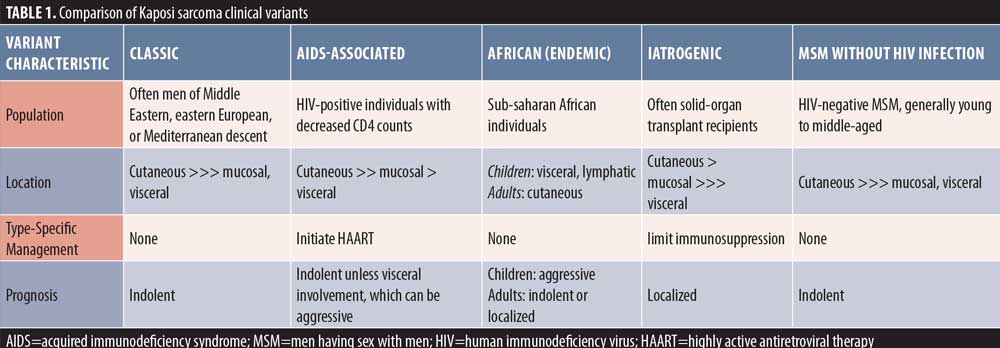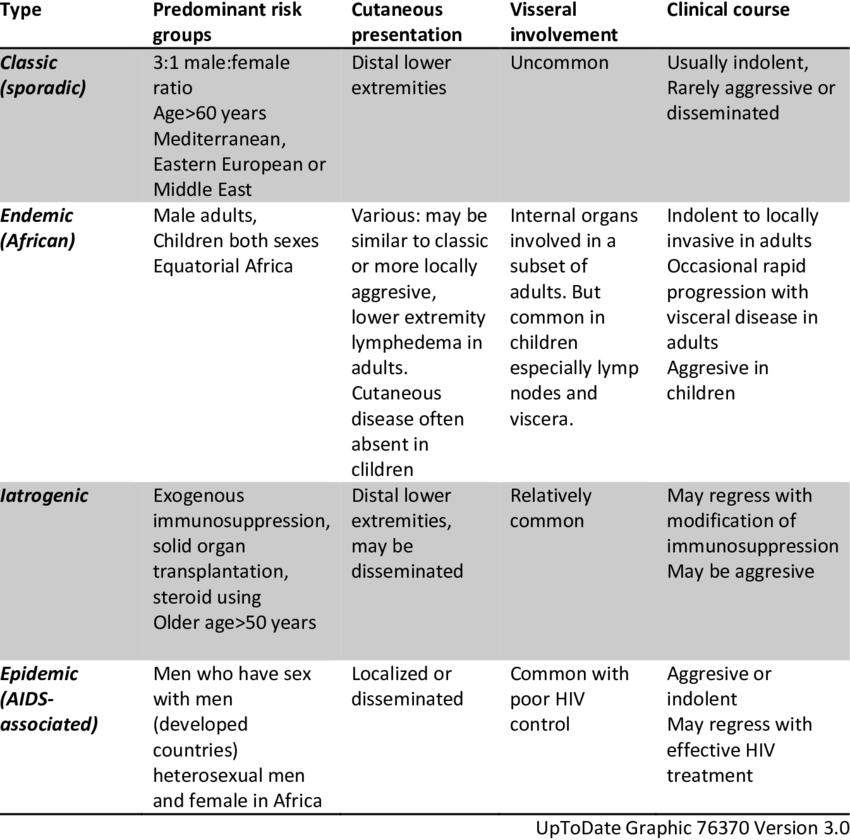
Kaposi sarcoma is a non-cancerous soft-tissue neoplasia that develops in people exposed to the human papilloma virus-(HPV) -8 (HHV-8) as a result of a virus called the Kaposi virus (KSHV). It first appears as red or purple lesions on the surface of the skin; on the nose, lips, or mouth; or in the intestinal tract. They may spread through the bloodstream to affect other parts of the body including the kidney, lungs, and heart.
Kaposi can affect both men and women. It usually occurs in adults, but it may start in childhood too
There are three stages of this cancer. The first one is called the primary condition, which can only be diagnosed by surgery.
A definitive diagnosis of primary condition is made when there is no sign of any new tumors developing. A biopsy will reveal that the cancer is present. A second diagnosis is made after there are changes in the lymph nodes, bone marrow, or testes. Tumors may also be found if the person had an operation to remove bone marrow or lymph nodes. Another indication for a second diagnosis is if the patient has had treatment for any other cancer.
Third diagnosis is made if there is still no sign of any symptoms or changes in symptoms in patients who have reached the second stage. Secondary condition, however, can also be diagnosed in children, older adults, and people with certain diseases like HIV or AIDS. In such cases, blood tests can confirm the diagnosis. For some other diseases, a scan of the brain, liver, kidneys, bones, or heart can show whether the patient has reached the primary phase or not.
The human papilloma virus (HPV-8) that causes Kaposi sarcoma, is sexually transmitted, so the spread of the disease is highly dependent on sexual activity. Although it is rare, transmission of the virus through sexual intercourse may occur without the presence of any symptoms. This is why people who have had their genital warts removed or those who use condoms are more susceptible to Kaposi.
Although Kaposi sarcoma is curable in most cases, surgery cannot prevent the recurrence of the cancer. If there are no signs of recurrence at this point, surgery may be done only to eliminate the cancer. In this case, chemotherapy, radiation therapy or surgical excision will be used to kill the cancer cells.

Chemotherapy can cause side effects and should be discussed with a doctor
Because the cancer has spread to other parts of the body, chemotherapy may not be successful in treating the entire tumor. In addition, a patient may need to take immunosuppressive drugs for years after the chemotherapy has been completed.
If no progress has been seen after chemotherapy, surgery is recommended for treatment. Surgery should be considered if the cancer has spread to the bones or other areas of the body. Sometimes, surgery will be required to treat all of the affected tissues. It may also be used for large tumors.
A more invasive technique called arthroplasty may be used if the tumor is too large to be treated by surgery. In arthroplasty, a portion of the vertebrae in the hip joint may be removed. The incision is often smaller than in surgery to allow for the removal of more of the bone.
Chemotherapy can cause nausea and vomiting. It may cause changes in the skin and in the bones. Patients who are on chemotherapy should follow a strict diet and exercise regimen and avoid taking certain foods that can aggravate their condition.
The recovery from the surgery takes time. Patients may be hospitalized for several days and may have to stay in the hospital for several weeks before they are released.
The best chance of a person being cured of Kaposi sarcoma is through chemotherapy. It is important to remember that cancer treatments come in different forms and can be taken as a combination. There is a need to carefully evaluate the type of treatment a doctor is prescribing for a patient. It is also important to check with a doctor before undergoing the treatments.

